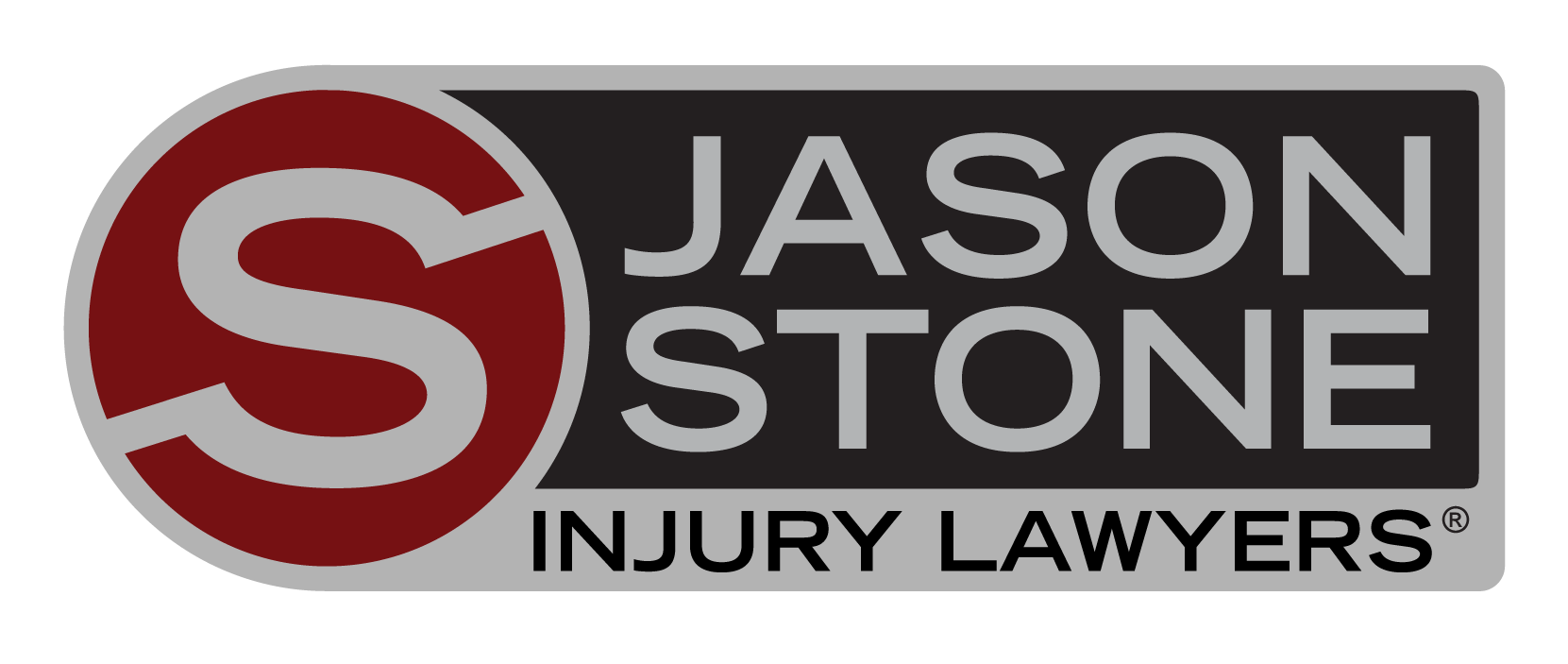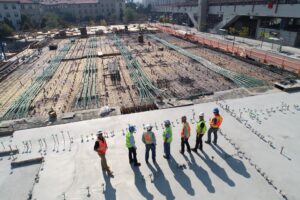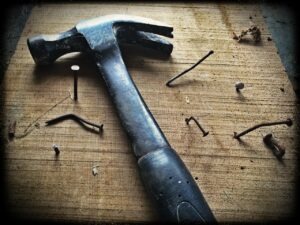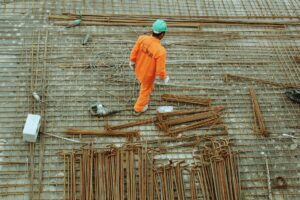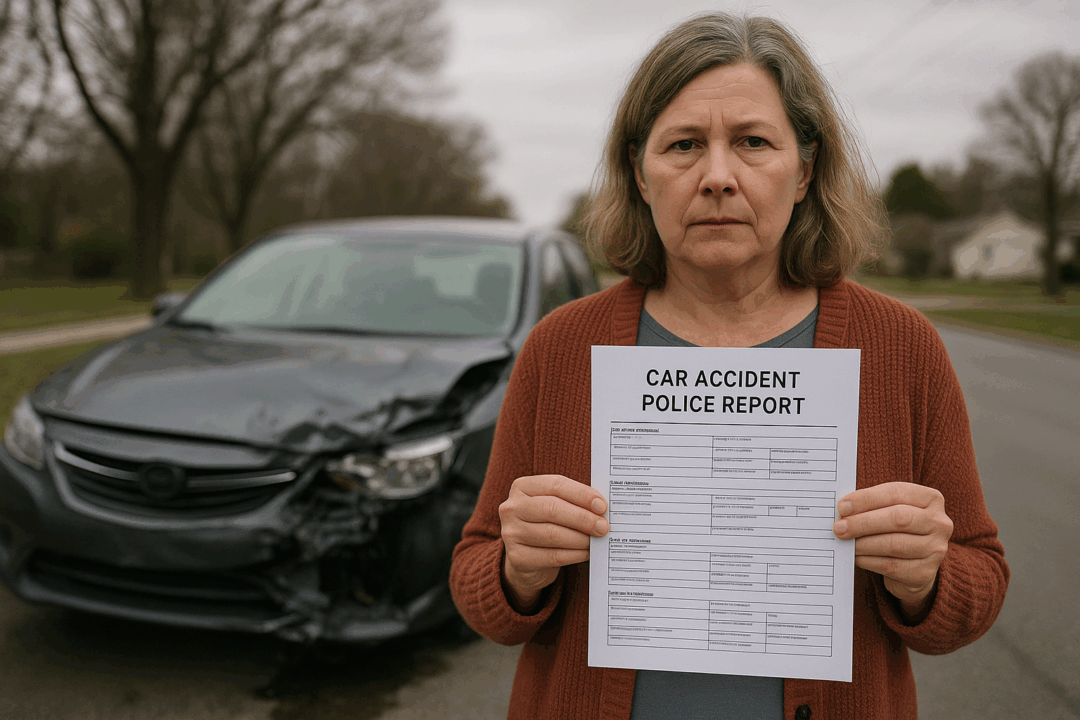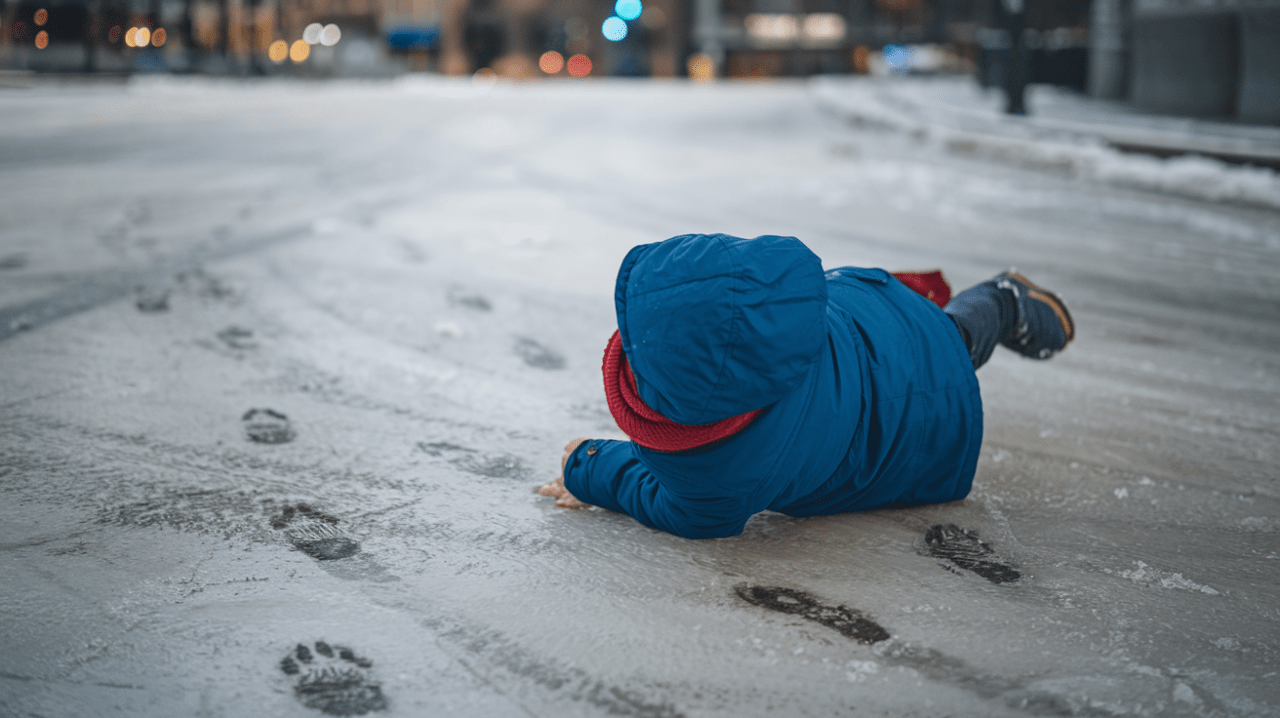Construction workers know they must take more precautions than employees in other industries. That said, those working in construction must know what hazards to take precautions against. Here are the top 10 safety hazards on construction sites.
1. Working From Height
Working from height presents one of the most common construction hazards, and falling from a height is the leading cause of workplace fatal injuries. Sources of this specific risk include unprotected edges, unsecured ladders and scaffolding, loose equipment on raised pathways or roofs, and a lack of guardrails or safety nets.
All construction employees working at a height must have the proper training to work on various surfaces and with various equipment. By law, all construction companies must assess risks for employees working from height. Companies must also have a strategy to complete work from height safely.
Prevention methods include avoiding working from a height where possible, taking extra care when using equipment, and ensuring employees have access to safety nets and other preventative measures that reduce the effects of a fall.
2. Falls, Trips and Slips
Unused site materials, uncompleted buildings and uneven construction site terrain create slip, trip and fall hazards. Sources of the specific hazard include leaving equipment and materials out, slippery surfaces, loose cables, and irregular ground or surfaces.
To make sure tools and equipment go in the right place, construction sites require work area management. Workers must keep pathways clear of hazards and litter, and they should wear personal protection equipment. Construction site managers should host safety meetings to keep workers current on the most current safety measures and practices. Whenever workers discover risks, they should know whom to turn to or where to go to report them.
Additional protective measures include using plainly designated and well-lit walkways, setting aside space specifically for waste collection and using cordless tools as much as possible. Slippery surfaces require stone treatments, and icy areas need gritty treatments. Workers must also wear footwear that helps them keep both feet on the ground.
3. Moving Objects
As building construction comes along, moving objects can become moving hazards. Common moving objects on construction sites include diggers, supply vehicles and overhead lifting equipment. Other risk sources include poor lighting, little room to move around and working in proximity to moving objects.
Much like falls, trips and slips, proper work area management is essential to make sure construction workers use equipment properly and safely according to the latest guidelines. Workers should wear proper protective clothing, including steel-toe shoes, high-visibility vests and hard hats. Construction employees must understand that they should practice constant vigilance and make themselves aware of their surroundings to stay safe.
4. Noise
Any excessive or repetitive noise exceeding 84 d(B)a may lead to severe hearing impairment and deafness. Other than deafness, working in a noisy environment can distract construction workers and pull their focus from the task at hand. Specific sources of noise in the industry include heavy-duty vehicles, power tools and groundwork equipment.
Companies can keep workers safe by performing complete noise risk assessments and ensuring all workers have quality PPE, such as soundproof headphones.
5. Hand Arm Vibration Syndrome
Using power tools may harm blood vessels and nerves because of the constant vibrations. Hand Arm Vibration Syndrome is a joint, nerve and blood vessel disease caused by constantly using handheld power tools. While construction companies can help protect workers against the syndrome, once a person endures sufficient damage to cause the condition, it becomes permanent. Once a person has the disease, she or he may experience finger pain during cold weather and lose the ability to perform fine work.
Construction site managers must perform risk assessments to determine the safety of using handheld tool alternatives, such as mechanical equipment. When a job requires a power tool, workers should only use them for a short time and ensure the tool’s maintained properly. Construction workers deserve proper training on power tools to use them correctly, and they should work with PPE.
6. Manual and Material Handling
Construction employees must exercise caution while using their hands or equipment to lift materials or equipment. Employees may suffer musculoskeletal disorders and similar injuries without proper lifting training or equipment. Disorders often target tissues, muscles, limb joints and the back, and a person could experience a permanent disability. Sources of the hazard include poor lifting stance and repeatedly lifting heavy materials or equipment.
One way construction employers can keep workers safe is to make sure they receive proper training in using lifting equipment. Employers may administer tests to ensure employees know all essential training. When workers lift items without machines or equipment, they must consider the tasks, the weight, which stance to use and the work environment. Employees should also think about their physical health and capabilities when deciding whether and how to lift heavy loads.
7. Collapses
Trenches commonly cave in on construction and demolition sites, trapping workers underneath. Other sources of collapses include working areas losing stability after adding weight, tumbling into excavations, equipment and material falling when trenches cave in, and excavations compromising structures.
Before creating a trench, construction managers must think about the support the trench needs, make sure they secure trenches, and look trenches over before and during shifts. Site managers must also lead safety meetings with workers to let them know about the latest procedures, and workers should use PPE. In case of an emergency, it’s a good idea to have a well-stocked first-aid kit on hand.
8. Asbestos
Damaging or disturbing materials with asbestos on construction sites may put a worker’s health at risk. Inhaling the naturally occurring fiber may trigger asbestosis, lung cancer, mesothelioma or pleural thickening. Asbestos sources include some insulation, thermal paper, ceiling tiles and old switch gears.
To keep employees safe, construction companies must examine buildings suspected of having asbestos and employ experienced help to dispose of dangerous materials safely. Workers should also wear protective equipment.
9. Electricity
Common sources of electrocution hazards on construction sites include damaged or poor insulation, overhead power lines, damaged equipment and tools, and overloaded power boards. Site managers must ensure employees do not store items under overhead power cables and use restrictive barriers and signs. Workers must develop the habit of shutting off power sources before repairing equipment.
10. Airborne Dust
Inhaling dust from dangerous materials may cause lung cancer, asthma and pulmonary diseases. Common sources of the construction site hazard include building woodwork, laying ballasts, cutting concrete and sweeping the floor.
To determine whether specific tasks require more control, site managers should review processes and materials. Using exhaust systems helps control dust, and employees should remove as much dust from their clothing as possible before removing protective equipment.
Contact Us
If you were involved in a construction site accident, you could have a legal case. Let Jason Stone Injury Lawyers listen to your case and help you determine whether you have a viable claim. You don’t need to pay an upfront fee to get started on your case, and we’re committed to helping you recover damages and get your life back. Because of our Stone Cold Guarantee, we don’t get paid until we settle your case. There’s No Obligation, Just Information. Call us at 800-577-5188 or submit an online form today.
Not Trusting What You’re Being Told?
Better Phone Stone
800-577-5188
 START MY NO OBLIGATION CONSULTATION
START MY NO OBLIGATION CONSULTATION